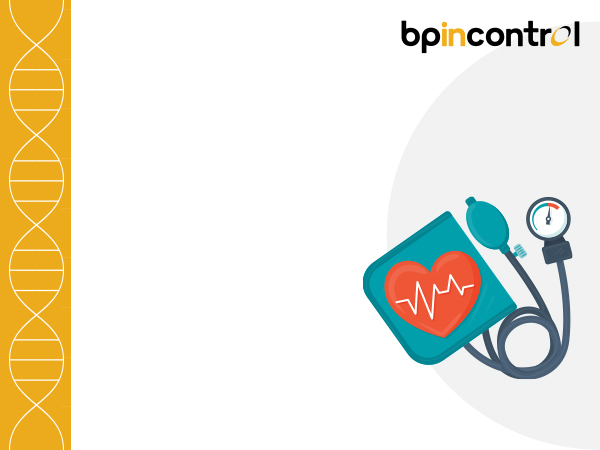Everything you Need to Know About Hyperaldosteronism

Table of Contents
Hypertension is a common lifestyle condition that affects 1 in every three adults globally. Many hypertensive patients fall prey to heart conditions due to late diagnosis and lack of awareness to take preventive measures beforehand. Another aspect of hypertension that exists in veiled form is called hyperaldosteronism.
In this blog, we’ll discuss what hyperaldosteronism is and its causes, symptoms, and treatment options.
What is Hyperaldosteronism?
Hyperaldosteronism is a condition in which there is too much activity of the adrenal glands, which are located on top of each kidney. The adrenal glands produce two main hormones: cortisol and aldosterone. In most cases, hyperaldosteronism results from one or both of these organs producing too much aldosterone. This leads to high blood pressure and other signs and symptoms associated with this condition.
Excess aldosterone causes the kidneys to retain more sodium and potassium than average. This can result in high blood pressure, oedema (swelling), congestive heart failure, and kidney disease.
What are the types of Hyperaldosteronism?
Hyperaldosteronism can be caused by an overactive adrenal gland (primary hyperaldosteronism) or another condition that stimulates the adrenal glands to produce too much aldosterone (secondary hyperaldosteronism).
A tumor often causes primary hyperaldosteronism in one of the adrenal glands. Tumours that cause primary hyperaldosteronism are called “adenomas.” They are generally benign (not cancerous) but can become malignant (cancerous) over time.
Secondary hyperaldosteronism occurs when another condition causes your body to increase its aldosterone production. This could be due to high blood pressure, diabetes or heart failure.
What causes hyperaldosteronism?
Hyperaldosteronism can be caused by an adrenal tumour (adenoma) or by another disease that makes your body produce too much aldosterone. It can also be caused by taking certain medications. Following are the primary and secondary hyperaldosteronism causes.
- Causes of primary hyperaldosteronism
Adrenal non-cancerous tumours are the most common cause of primary hyperaldosteronism. Some rarer causes of this type include unilateral adrenal hyperplasia and aldosterone-producing cancerous tumours. It can also be inherited from a family member, especially from biological parents.
- Causes of secondary hyperaldosteronism
An obstructive renal artery disease can be a significant cause of hyperaldosteronism. If you are suffering from renal hypertension or any condition that causes fluid retention can push you to the verge of developing hyperaldosteronism. These conditions include heart failure, cirrhosis of the liver and nephrotic syndrome.
Signs and symptoms of Hyperaldosteronism
The symptoms of primary and secondary hyperaldosteronism are similar but may vary in severity depending on the cause. The most common symptom is high blood pressure, which may be mild or severe enough to cause damage to organs such as your kidneys or heart. Other symptoms include:
- Headaches
- Dizziness
- Difficulty in breathing
- Muscle weakness and muscle spasms
- Fatigue
- Extreme thirst
- Frequent urination
How to treat Hyperaldosteronism?
Hyperaldosteronism treatment includes medication or surgery to remove the tumour or blockage that causes the overproduction of aldosterone.
- Surgery:Whether you have cancerous or non-cancerous tumours in one of the adrenal glands, the best way is to get them surgically removed. Your doctor may recommend laparoscopic surgery to remove tumours in your adrenal gland. This surgery ensures fast recovery and a shorter stay in the hospital.
- Medication:Your doctor will suggest diuretic medication if there are tumours in both adrenal glands. Also, he may recommend aldosterone-blocking medications depending on your condition. These medications won’t completely treat the problem but will help manage it better.
- Lifestyle Changes:Along with the medications, your doctor will suggest you tweak your lifestyle habits if you have high blood pressure. Some of them include the following:
- Following a healthy and low-sodium diet
- Avoiding alcohol consumption
- Quitting smoking
- Exercising regularly
- Managing stress
Correct information can help you get the proper treatment.
There is no quick fix for this health condition, but hyperaldosteronism can be effectively managed with time. But neglecting the symptom, especially when you are hypertensive, will increase the risk of falling prey to other health conditions. The best way is to consult a doctor who will help you with the diagnosis by evaluating your symptoms and health history. Connect with expert doctors on BP in Control.
Disclaimer
The information contained in this article is to educate, spread awareness in relation to hypertension and other diseases to the public at large. The contents of this article are created and developed by BPinControl.in through its authors, which has necessary, authorisations, license, approvals, permits etc to allow usage of this articles on The Website. The views and opinions expressed in this article are views, opinions of the respective authors and are independently endorsed by doctors. Although great care has been taken in compiling and checking the information in this article, The Website shall not be responsible, or in any way liable for any errors, omissions or inaccuracies in this article whether arising from negligence or otherwise, or for any consequences arising therefrom. The content of this article is not a substitute for any medical advice. The Website shall not be held responsible or liable for any consequence arising out of reliance on the information provided in the article.


Comments (0)
No comments found.Add your comment